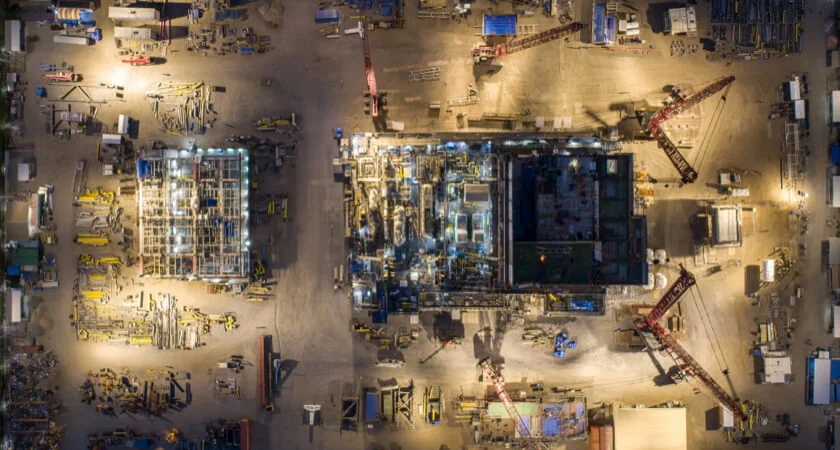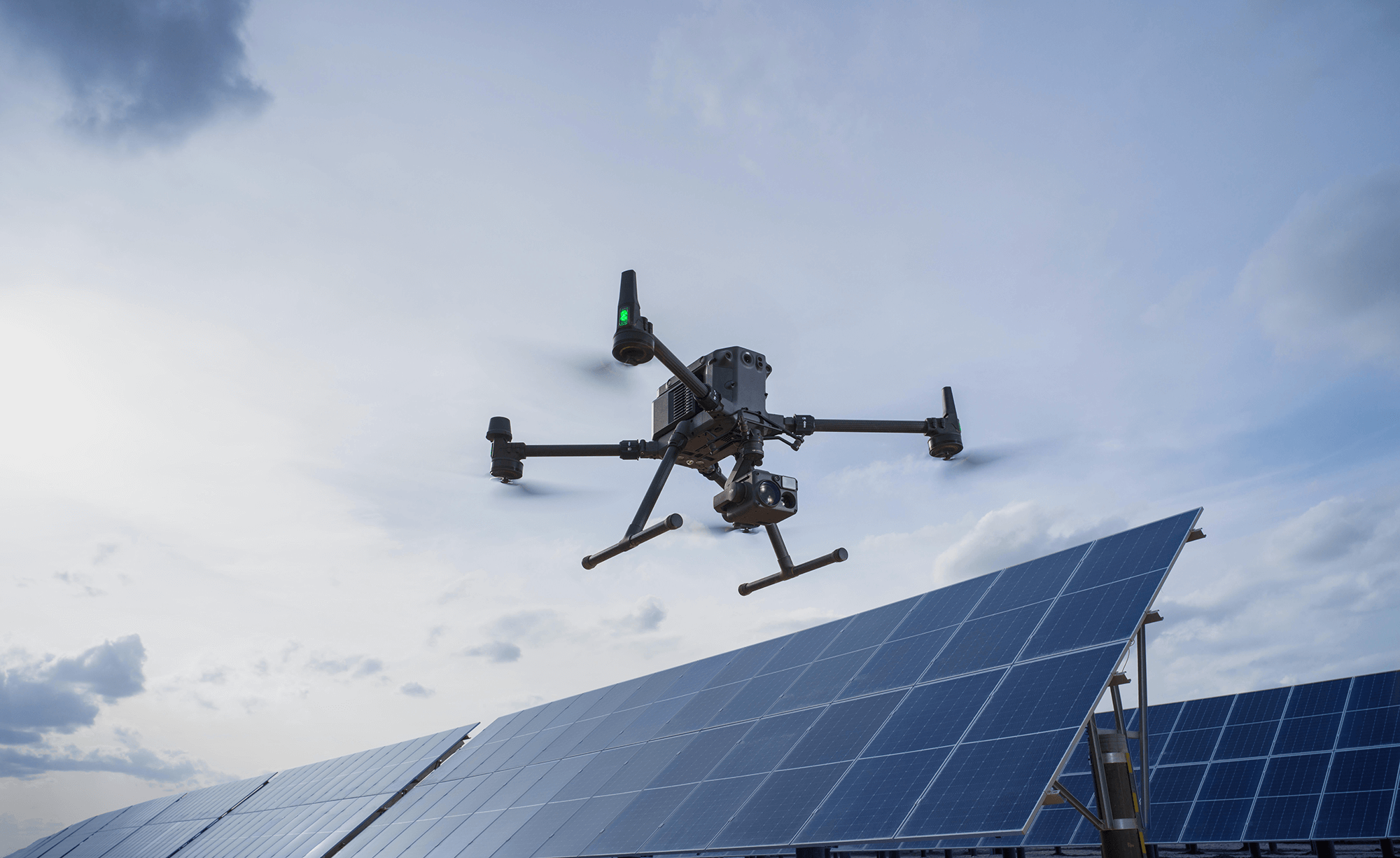
Construction sites are bustling hubs of activity, but they can also be hotspots for theft and vandalism. Integrating technologies like drone patrols and CCTV cameras can greatly enhance construction site security measures, making it easier to monitor large areas and prevent unauthorised access.
You face numerous security challenges when managing a construction site. Equipment theft and material loss can significantly affect timelines and budgets. Break-ins can also put people at risk. Embracing innovative solutions can mitigate these potential risks.
The construction industry is increasingly turning to advanced technologies as they offer effective security measures and peace of mind. Drone patrols provide a bird’s-eye view of the site, ensuring comprehensive coverage and quick response times to potential threats. By implementing a combination of traditional and modern security tactics, you can keep your construction site secure and maintain efficient operations.
Core strategies for construction site security
Maintaining security at a construction site helps prevent theft, vandalism and accidents. Effective strategies include managing the site’s perimeter, using modern surveillance technologies and employing trained security personnel. Each approach adds a layer of protection, making your site more secure and safe.
Perimeter security and access control
Establishing robust perimeter security and access control systems is the first step in protecting your construction site. Fencing and gates act as the primary physical barriers, preventing unauthorised entry. Consider using access control systems such as key cards or biometric scanners to manage who enters and exits the site. This ensures you have clear records of site activity and enhances safety.
Signage is another strong deterrent. Displaying signs that warn of security measures can prevent potential intruders. Barrier systems and boundary signage serve as effective deterrents, ensuring only authorised personnel have access. By securing the perimeter, you reduce the likelihood of trespassing.

Advanced monitoring: CCTV and remote surveillance
Using advanced security systems like CCTV and remote surveillance form an effective site security strategy. Cameras installed at various points of the site provide a visible deterrent, as intruders are less likely to target areas under surveillance. Ensure the cameras cover key areas such as entrances, exits and areas where valuable equipment is held.
CCTV monitoring enables real-time supervision of the site. Implementing remote drone surveillance allows security personnel to watch the site even when off-location. With modern technology, you can access camera feeds through smartphones or computers, ensuring you are always connected to the site. This round-the-clock monitoring increases the level of security and can provide evidence if needed.
On-site security personnel and patrols
Having a dedicated team of security personnel on-site is a common method of protection. Security guards provide an active presence, which can deter intruders. Trained personnel can respond to security incidents swiftly and manage situations before they escalate.
Implementing security patrols ensures consistent monitoring of your site. These can be conducted on foot or using mobile patrols for larger areas. Security teams also handle access control, keeping track of people coming in and out. The presence of guards can increase the site’s overall security and reassurance for workers.
There are some downsides to physical security personnel. For one, constant site monitoring can come at a high expense, as you’ll likely need multiple security guards for effective coverage. There’s also a human risk, as these personnel are risking their personal safety to protect your site. If your site is large and a security breach is detected, it can take security staff valuable time to investigate, while they may also not be able to survey hard-to-reach areas.
Lighting and physical barriers
Adequate lighting is a fundamental part of construction site security. Proper lighting acts as a deterrent by reducing hiding spots for potential intruders. Effective lighting for construction sites should illuminate all work areas, entrances and exits.
Physical barriers, such as bollards and barriers at entry points, add another layer of protection. They help in directing traffic flow and ensuring entry points are monitored adequately. Combined with high-quality lighting, physical barriers boost site safety, deterring unauthorised access and preventing accidents.
Innovative solutions: using drone patrols and modern technology
Implementing drone patrols and other modern technologies can significantly improve security at construction sites. These solutions offer real-time monitoring, adaptability and a comprehensive approach to safety, providing an edge over traditional methods.
Drone security: advantages and implementation
Using drones as security solutions has changed how construction sites can be monitored. A drone provides a bird’s-eye view, capturing areas that might be hard to see from the ground. This kind of oversight means you can spot potential threats early.
Drones also help speed up security checks. With drone patrols, surveillance becomes faster than sending a person on foot. They can be programmed for regular routes or sent to check specific incidents.
Implementing an on-site drone or setting up a drone in a box system ensures these devices are ready when you need them. Their use in security not only improves efficiency but also enhances overall site safety. As a security service, fully managed by Dronebox, drones can take the burden of security monitoring away from you.

Integrated security systems and real-time response
Combining drones with other technologies can form a comprehensive security strategy. Linking remote monitoring functions with alarm systems and advanced sensors allows for instant alerts and quick reactions to any issues. This advanced technology integration ensures that you aren’t solely reliant on human presence.
A central control unit manages all these elements, allowing for a real-time monitoring and rapid response setup. This way, if there’s a breach or unusual activity, your advanced security system can automatically deploy a drone to assess the situation while alerting security personnel.
This integration ensures seamless operations, enhancing your site’s protection capabilities. It’s about having a setup that adapts to changing conditions and potential threats, maintaining high security at all times.
Comprehensive coverage and adaptable site security
Drones offer flexible solutions that ensure comprehensive coverage of large areas. With customisable security protocols, you can adjust patrol routes and frequency, addressing specific site needs. This adaptability is key in ensuring no part of the site is left unchecked.
Additionally, professional video monitoring combined with advanced perimeter intruder detection makes it difficult for trespassers to go unnoticed. Drones can also work alongside CCTV towers, extending their reach and providing clearer insights into any developing situations.
Collectively, these innovative solutions provide enhanced protection and advanced perimeter solutions, ensuring your construction site maintains its security at all times.
Frequently asked questions
Securing a construction site can be challenging, but using both advanced technologies like drones and tried-and-true methods can make a big difference. Choosing the right security methods protects your site and provides peace of mind.
What are the most effective strategies for enhancing security on construction sites?
Strong access control measures and active surveillance are key. Utilising fences, gates and security personnel helps manage entry points effectively. Additionally, proper lighting deters intruders and makes security patrols more efficient. For continued monitoring, drones are emerging as a cost-effective method of 24/7 site surveillance.
How can drone technology be utilised to improve surveillance on building projects?
Drones can provide aerial views that are not possible to achieve through ground security alone. They are useful for monitoring large areas quickly and can be adapted for regular patrols. Drones equipped with cameras can track movements and suspicious activities from above, increasing overall site security.
What measures should be taken to prevent unauthorised access to construction areas?
Installing fences and gates with controlled access points is essential. This way, only approved personnel can enter through these points. To deter break-ins, physical barriers like high fences topped with barbed wire are a tried-and-true method. Using surveillance cameras and technologies like motion sensors can add additional layers of protection.
What are the advantages of integrating security systems and personnel on construction sites?
Combining technology with human oversight creates a comprehensive security network. Security personnel can respond quickly to alerts from automated systems, and their presence alone can deter criminal activity. This blend ensures that all aspects of security are covered effectively, providing a safer environment.
How important is it to conduct risk assessments for construction site security planning?
Risk assessments are vital to identify potential vulnerabilities on site. They help in planning security measures tailored to specific risks and allow companies to allocate resources efficiently. Regular assessments ensure that security strategies remain effective as the construction project evolves.
What methods can construction companies implement to ensure tools and machinery are secured?
Utilising lockable storage areas and applying asset tracking systems help in keeping tools and machinery safe. Regularly tracking and auditing valuable equipment ensures nothing is lost or stolen. Additionally, ensuring that only authorised personnel can access these tools minimises risk.



